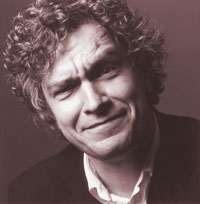How about a Harley in the sky?

DESPITE the excitement about Dubai on Dutch television, despite the hordes of Liverpudlians and Frankfurters that overrun bars in the shiny emirate, the Middle East isn’t well known enough as a tourism destination, according to a European branding expert.
On the continent, says Hans Brandt, chairman of Dutch identity design firm Total Identity, the Middle East throws up images associated with shock and horror, not sun and surf. “It’s not known as a tourist hotspot, except perhaps for Egypt, Morocco and Turkey. The Middle East, by and large, is still seen as dodgy, and there are a lot of misconceptions of Islam that mix up the perspective,” he tells TTN on a visit to the Gulf, where the company is expanding its operations. “There’s still a long way to go.”
Information is key to changing the way the world views the region, he says, and there simply isn’t enough of it around. “Yes we hear about Israel and Egypt, but we don’t know very much about the Gulf. Even Dubai is better known for its real estate projects and offshore islands than for its beaches. There’s a perception that now is not the time to visit because it’s a construction zone.”
And he should know a thing or two about brand image and identity: his 120-person firm, Total Identity has indelibly stamped a variety of impressions on our minds, including the classic KLM Royal Dutch Airlines and KLM Cargo identities, both Al Futtaim’s corporate symbols, the corporate design for construction company Besix, the design of the Netherlands’ passport, several projects for Hyundai and a variety of others.
The company is now focused on expanding into Asia and the Gulf, and has appointed an agent for the GCC, Dubai-based Image Creators FZE. “As they shift from industrialised economies to service economies, these markets, along with Eastern Europe, are ripe for identity and branding services,” he says, pointing out that every international design and identity network operates from an Anglo-American mindset. “We want to give the world a European mindset instead.” This doesn’t mean exporting European ideas, but rather, creating local concepts driven by the values of social entrepreneurship and responsible business.” The Anglo-American model versus the European model, he says, is hierarchical versus lateral, bureaucracy versus entrepreneurship, copying the past versus creating the future.”
On the travel and tourism industry here in the Middle East, he says companies need to stop importing and start developing home-grown, organic concepts. “Tall buildings don’t suggest a great holiday. The Gulf countries would do well to learn from Turkey and Morocco, by incorporating their region’s history, culture and archaeology into the destination personalities,” he says.
Destinations, then, need to be personalities, not just brands, and these personalities need to be ‘medialised’ or communicated. “Travel is a lot about experience and an interesting destination will give me enough experience, it does not need the impact of a brand. Destinations need to have living identities or personalities and need to be fluid, versus frozen. A brand freezes a part of the experience, but people are no longer willing to accept this – they want the entire deal.” Therefore personalities, which must be medialised using design as the medium.
An identity, he says, needs to interact with consumers. So what about designer hotels like the in-development Armani and Missoni properties, which are built around an experience? “There’s nothing of Armani in his hotel. Armani does not brand the service, for example, he brands the home linen, the furniture and the toiletries. So the entire experience can only be programmed to deliver designer luxury to the consumer, who expects a fantasy – and in the end, it will be impossible to deliver that fantasy.” He agrees, however, that people will pay for the cachet that having lived at the Armani brings with it.
From luxury on ground to luxury in the sky. As first and business class get better beds and serve better sandwiches, Brandt has an interesting take on the airline industry and says the time is ripe for new concepts and new approaches, such as Virgin and EasyJet. Both are relatively recent ideas, born in a period of blurred national boundaries – and are therefore clean identities, shorn of nationhood and its accompanying clichés. The mergers of KLM and Air France and Lufthansa and Swiss, have already kick-started the economic processes and Brandt says we’re not far away from a time where the network (such as SkyAlliance or StarAlliance) becomes the dominant brand, with the partner airline relegated to second place. “KLM is now only a label, not a brand or an identity any more.”
However, new ideas such as Easy and Virgin focus on price and service and neither has changed the flight experience. Even with the A380, he says, so long as the business is about price cuts and energy costs, there are no margins to invest in augmenting the experience. “The excitement is not with planes that will carry 500 or 700 passengers, but in niche segments, maybe a return to Fokkers with 25 people. We’re flying shorter distances a lot more now, and quite often flights aren’t completely booked out. So why not fewer but better seating – or the ability to conduct business meetings on flights – that people will pay more for?”
So what next for airline branding? Brandt puts forward two different directions: concept brands, such as Easy, or cultural brands, such as Harley Davidson. “With Easy, the name says it all. It is a concept that can be transferred to hotels, to cruises, to almost any product – so the actual business doesn’t matter as long as the brand delivers. Harley Davidson, on the other hand, is perhaps the most famous example of cultural branding. With someone on a Harley, you know what the guy is about, what his desires are, what he’s dreaming. Airline identity design could go either way.”
